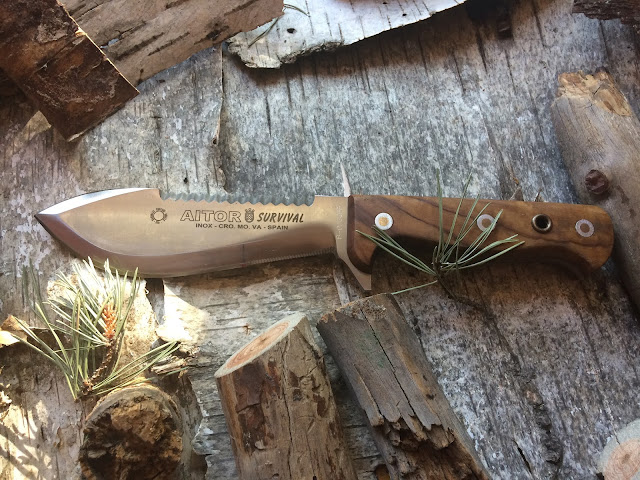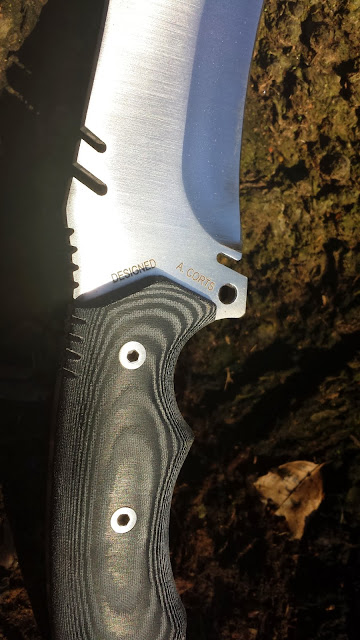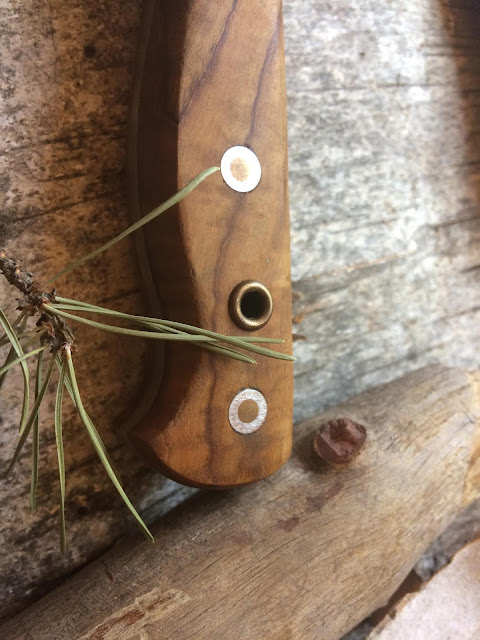I remember as a kid at high school, we missed a day of sport because of the rain. A temporary teacher came, she was about in her late 50's early sixties. She told everyone that there would be no sport but instead she would read us a story! Read a story??? What? we were all about 16-17 years old (that would be unheard of today). So that she did. She read Three Skeleton Key by George G. Toudouze 1937. A story of survival. She read it with such passion no one said a word, no one heckled her, no one was looking out windows or having to take a smoke in the toilets or throwing paper aeroplanes as we did in those days.
Later I watched on TV at some point, The Most Dangerous Game another classic story of survival by Richard Connell, 1924 and later turned into said movie in 1932. In this movie we got a glimpse of the Bowie knife or what was probably the closest rendition of an original Bowie according to historians, with a "bird beak handle"
Years past and this romanticised thing of human survival was met with countless Sci Fi movies and the pursuit of innocents in the wilds by maniacs unknown! The thing about survival is part of our history, part of our genetics like it or not. For some it lies close to the surface, for many, it is something they would never want to encounter away from the comforts of civilisation.
What's interesting for me is that the "FAD" of the survival knife has never dulled (no pun intended!). Yes it was around before Sylvester Stallone brilliantly portrayed John Rambo in First Blood. Remember the Early Gerber, BUCK and of course the AITOR Jungle King? Even a glimpse from Wiltshire with their (Wilkinson Sword) version of a "Survival knife", and later Dartmoor versions were popular back in the eighties.
Who didn't want one? Who wasn't allowed one? Who blew their pocket money buying one? Who regretted not buying one?
Since those times there has been a plethora of "survival knives" and one must ask why? Well, it's simple because it's the genetics speaking LOL. Bazillions of Chinese knockoffs of the Rambo knife and even Chinese knock off of the knockoffs LOL! The word genuine holds no value. Countless BUCK knock offs of the "Buckmaster".
Boy, was I an idiot for not buying a genuine one when I had the chance! Too busy picking the same knife up and down asking for the knife cabinet to be opened every time I went into this particular shop, annoying the owner (just as well I knew him!).
SO, this brings me to the point of this article. I was looking at this Aitor for 3 years at least sitting untouched in the same place and now no longer, I took the plunge and am not dissatisfied. The Aitor Cuchillo 14" Survival knife with Aitor's proprietary stainless steel. They always listed it as CRO (for chrome) Mo Molybdenum and VA as vanadium of course. The word INOX simply means inoxidable and simply means "stainless". This knife was issued to the Spanish Special Forces back in 1980!
Although, better if it wasn't a hollow grind (but probably heavier). Anyway, one can see 3 wire cutter notches, two on the spine and one at the ricasso. Being a hollow grind makes it terrible at chopping as the blade behind the edge is just too thin and can not separate the wood enough. Cutting and levering is the forte of this knife (a strange combination- but originally designed for military usage in Argentina I believe). Plus it's very big and heavy at 6mm thick of 440C. I don't like to cart it around much these days, as it represents a lot more food I can carry by taking a lighter but just as useful, if not more, knife. This recurved shape is nothing new, it can be seen in knives and swords dating easily as far back as the Ottoman Empire days. You can see it on a recent model from Spartan knives too (a very good looking knife too, BTW).
Here's why:
A more manageable size length-wise
Blade not too long for hunting (let's face it, if u are trying to survive in the wilds, u maybe required to go hunting)
No wire cutter notches (would be good but no big deal they are absent)
Spine serrations of sorts, good for "hack jobs" to help preserve the blade should one not be able to sharpen their knife in the field.
A small set of serrations on the blade-these are very good to start cuts on difficult materials, then to be finished off by the main blade.
A sharpened swedge-obvious reason this is a good thing.
Comfortable no nonsense wooden grip, can be "customised" to users hands.
Scales permanently riveted on, no chance of them accidentally coming off.
I reground the edge to convex (it was almost convex anyway when I bought it!)
BCT







This comment has been removed by the author.
ReplyDeleteThanks For Valveable Information Best Damascus Knife
ReplyDelete